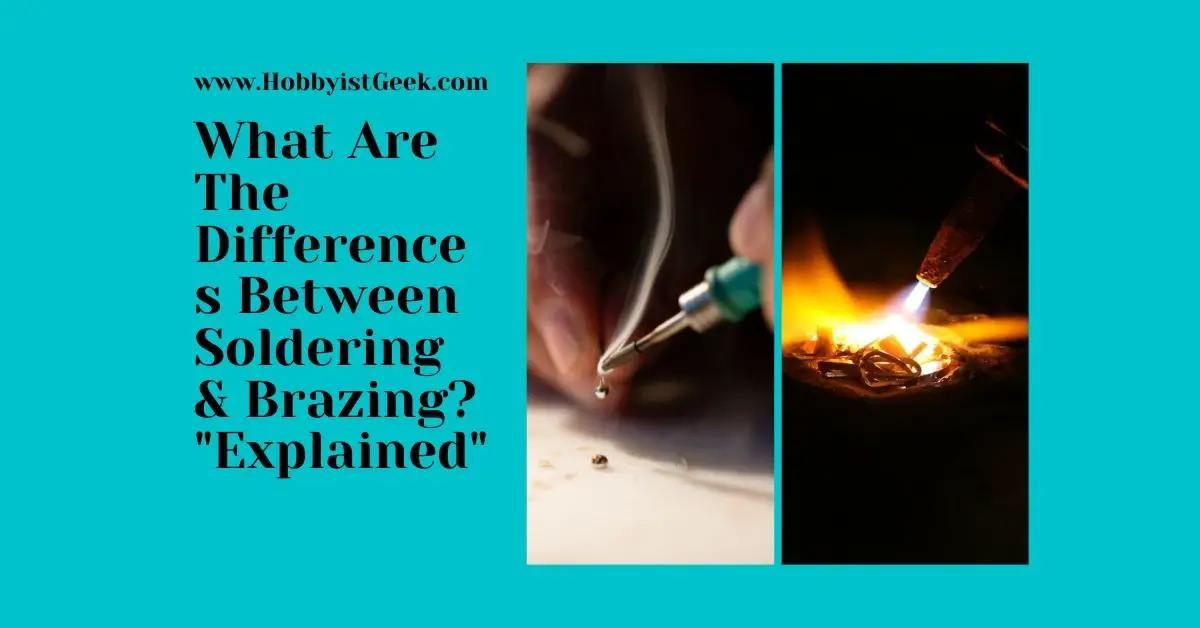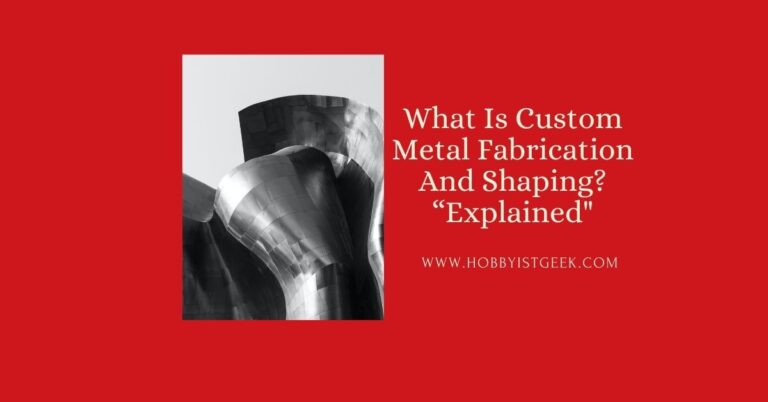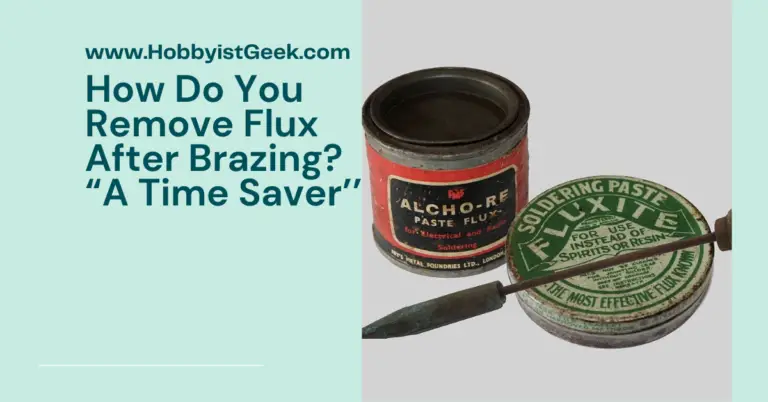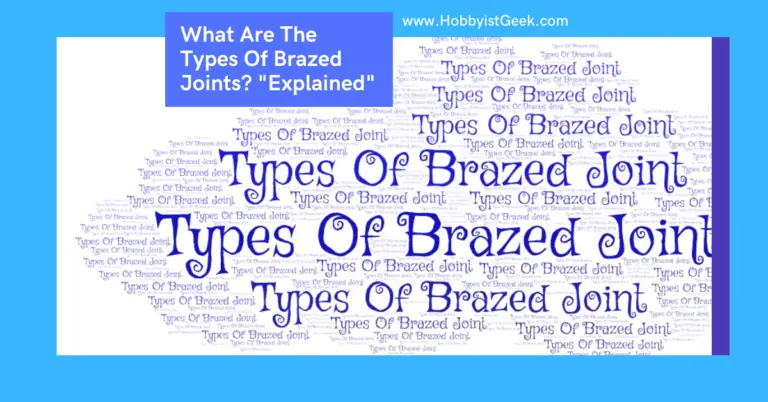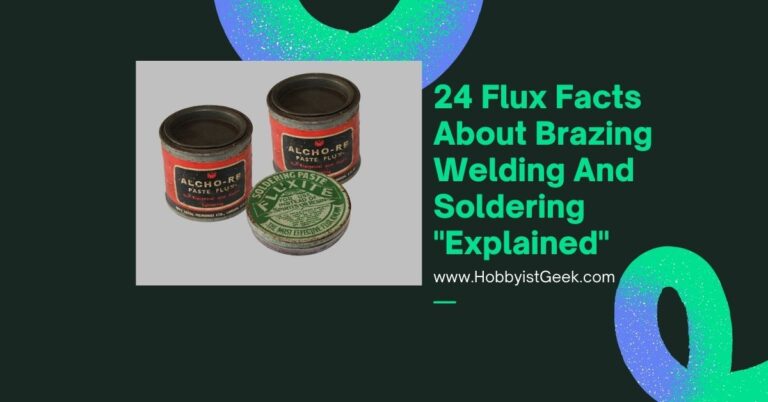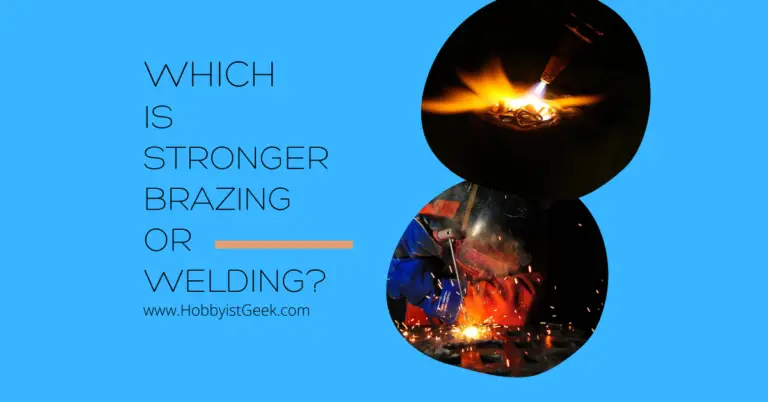What Are The Differences Between Soldering And Brazing? “Explained”
What Are The Differences Between Soldering And Brazing? Is going to be covered extensively in this article.
Soldering and brazing are methods of joining two or more metal pieces.
In most cases, the two methods are used to either join protect or fill in gaps in metal pieces.
Additionally, both processes utilize heat and have a lot in common.
However, soldering and brazing have differences in the application processes, skills needed, gear and the temperature required.
Keep reading to learn more about the similarities, differences, and also advantages of the two methods.
What Is Brazing?
Brazing is used to join two metals by heating an alloy that acts as a metal filler to bond two pieces of metal hence joining them using a brazing tourch.
Brazing is the strongest method of joining two metals without melting the parent components.
The filler agent should have a melting temperature below the parent metals for the process to be successful.
It can be used in jewelry making especially when dealing with metals such as copper, silver, and gold.
Although brazing is done at a temperature above 450 °C (842 0F), it should be below the melting temperature of the parent metals.
Lastly, the process also uses a fluid flux to improve the bond, letting the filler metal flow over the metals being joined.
fluid flux can also be used to clean metal surfaces before brazing. It can aid capillary action.
What Is Soldering?
Soldering is the method of joining metal parts together using a metal with a lower melting point than the parent metals.
It is the process in which similar and dissimilar metals are joined using a filler material. It creates strong permanent bonds at a temperature below 450 °C (840 °F).
The process requires flux to clean the metal surfaces in order to create strong bonds and prevent oxidation.
Once the filler metal is melted, it solidifies, making it possible to bond the two metals.
The most commonly used metal solders in jewelry making include gold, silver, copper, and brass among others. A torch is used during the jewelry soldering process.
Silver brazing and soldering experiments…
What Are The Advantages Of Soldering Over Brazing?
- Base metals do not require preheating.
- Uses low levels of temperature limiting chances of distortion such as twisting and buckling.
- Increases the lifespan of the solder.
- It is easy to control the soldering process.
- It is a comparably cheaper process.
- The soldered joints can be separated to create new joints in your jewelry pieces.
What Are The Advantages Of Brazing Over Soldering?
- Brazing can easily be used to join a wide variety of metals.
- It can be used to join all kinds of metals used in jewelry making.
- The properties of parent metals do not change.
- Produces stronger joints.
What Are The Disadvantages Of Soldering Over Brazing?
- The bonds made are more permanent, limiting the usage of parent metals in the future.
- Produces joints with less strength compared to brazing.
- The joints cannot be used under high temperatures.
- What Are The Disadvantages Of Brazing Over Soldering?
- The process is more expensive compared to soldering.
- Base metal requires preheating.
- Requires a lot of skill.
- Metal can get damaged in high temperatures.

What Is Stronger Brazing Or Silver Solder?
Between the two, brazing offers stronger joints compared to silver soldering.
Silver solder utilizes an eraser flow of the solder compared to brazing.
This means that when you want to join two metal pieces using silver solder, you must clean and level off the ends so there is no light gap to the two ends to be soldered.
The silver solder will then be drawn by capillary action up to the joint.
On the other hand, braze isn’t drawn into the joint, but is built on the metal surfaces being joined creating a stronger joint.
Where Would You Use Silver Solder?
In jewelry-making, silver solder can be used to join copper to copper. It can also join other common metals such as silver and brass.
However, because this process requires you to use 45% silver or higher, you will only want to use it when connecting copper jewelry with copper, silver with silver.
Also, if you solder gold, you would not use a solder you would use to join gold pieces.
Where Would You Use Brazing?
It is advisable to use brazing in complex assemblies that require many parts to be joined and when high joint strength is required.
It is also a very effective method for joining dissimilar metals.
For instance, brazing can be used to join copper and aluminum you must use the proper filler rod.
What Metal Is Used For Soldering?
Initially, it was okay to use lead for soldering. However, the regulations on lead have stopped its usage changing soldering to other metals.
When making jewelry, the most common solder used includes brass, copper, and silver.
The type of metals used during soldering is dependent on the type of soldering. There are two types of soldering; soft and hard soldering.
What is the difference between soft soldering and hard soldering?
Hard soldering requires a higher temperature using brass or silver solder. Soft soldering takes place at a relatively low temperature, usually between 200 and 300 degrees C, and usually use a soft alloy like tin or soft silver solder.
Soft soldering – this uses filler metals that have a lower melting point. Metals are mostly alloys.
Hard Silver soldering – The process primarily uses silver and sometimes brass to solder other metals.
Why Are Copper Fittings Cleaned Before Soldering Or Brazing?
There are various reasons why copper fittings are cleaned before soldering and brazing. Some of these reasons include:
To remove the oxide layer that forms on copper or other metal surfaces like silver etc…
The oxidation layer limits the soldering or brazing process, thus affecting the bond between copper and other parent metals.
To avoid having your joints not hold. This can result from spaces left behind by dirt, thereby having incompletely sealed joints. Therefore, cleaning helps get rid of the dirt and prevent failure in turn.
Do You Use Flux When Brazing Copper?
Flux should be used to chemically clean and purify metals.
It prevents oxidization and reduces the sooty residue produced in brazing. It is not mandatory to use a flux agent when brazing copper-phosphorous rods.
Some fuller rods have flux around the brass material fuller rod.
However, it is recommended to use a flux agent when brazing copper and most metals. This is because copper might at times experience high levels of oxidization.
Final Thoughts on … What Are The Differences Between Soldering And Brazing? “Explained”
I hope you enjoyed all the topics I covered in this article. Now you know what soldering and brazing are and the advantages of each process.
Where would you use soldering and brazing and many other tops were covered. I hope you enjoyed the article and most importantly you learned a lot.
Frequently Asked Questions
What metal Cannot Be Soldered?
The metals that can be soldered are gold, silver, brass, and iron.
It is best to use flux to create a clean service so the solder joints will be strong.
The metals that are hard to solder are:
Very hard: Tantalum Magnesium
Hard: Stainless steel
Less hard: Aluminium, Zinc, Nickel, etc.
Can You Braze Copper With A Propane Torch?
You can braze copper with a propane torch. However, the process should be done in a controlled environment. This ensures that the heat lost to the environment is lower than the heat being put into the braze joint.
Can You Connect Lead To Copper?
It is possible to join copper to lead. However, the process needs a lead loc to make the joint reliable and strong. Another thing to consider is knowing the diameter of your material. You can braze copper to lead when making an artistic sculpture by utilizing proper brazing techniques.
Why Is Copper Brazed?
t is important to brazing copper when in need of greater joint strength and when using temperatures around 350 0C (6620 F) or more.
Can I Solder Copper to Copper?
lower melting points. Some of the most common elements used to solder copper to copper include brass with flux and silver.

If you enjoyed this article you will love to find out other ways to use metal in your metal art.What Are The Practical Applications Of The Electroforming Process?
Sources
http://www.differencebetween.net/technology/difference-between-soldering-and-brazing/
- Evil Eye Hand: Unveiling the Mystical Origins and Meanings - February 2, 2024
- Amegreen Amethyst Meaning: Discover the Hidden Magic! - February 2, 2024
- Is The Evil Eye Bad?: A Deep Dive into Evil Eye Taboos - February 2, 2024

